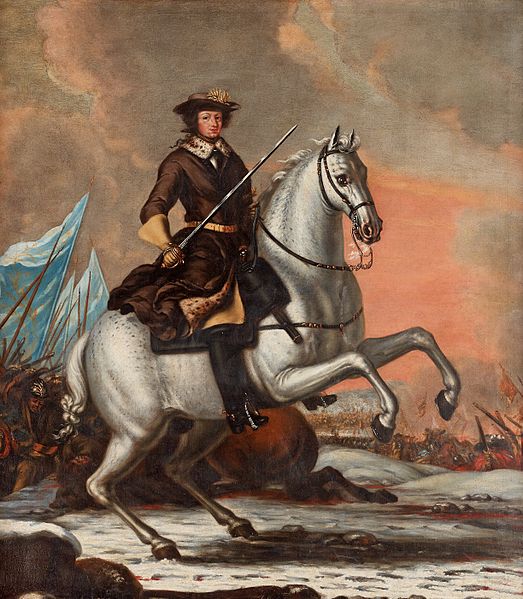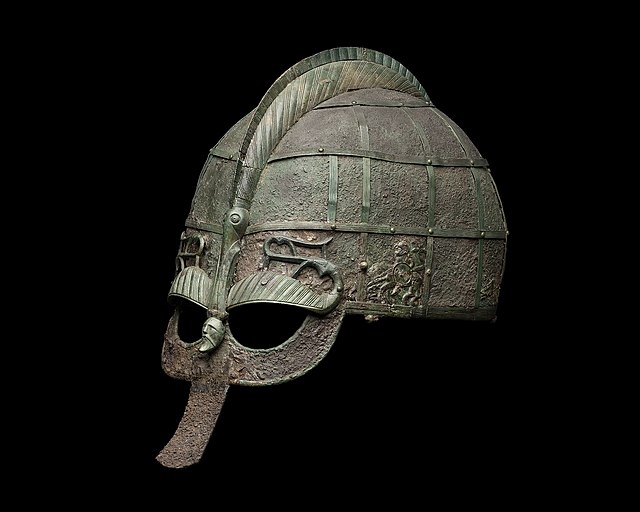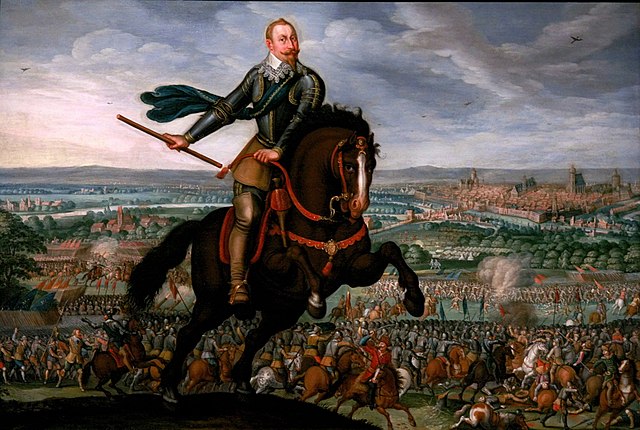The Swedish Empire was the period in Swedish history spanning much of the 17th and early 18th centuries during which Sweden became a European great power that exercised territorial control over much of the Baltic region. The beginning of the period is usually taken as the reign of Gustavus Adolphus, who ascended the throne in 1611, and its end as the loss of territories in 1721 following the Great Northern War.
Sweden's coat of arms (with erroneous tinctures) on a wall of City Hall at Lützen in Germany.
Triumph of King Charles X Gustav over the Polish–Lithuanian Commonwealth, 1655
King Charles XI
Charles XII
Sweden, formally the Kingdom of Sweden, is a Nordic country located on the Scandinavian Peninsula in Northern Europe. It borders Norway to the west and north, Finland to the east, and is connected to Denmark in the southwest by a bridge–tunnel across the Öresund.
A Vendel-era helmet, at the Swedish Museum of National Antiquities
The Tjängvide image stone dating from 800 to 1099, example of Viking art
Gustav I liberated Sweden from Christian II of Denmark, ending the Kalmar Union. He established the House of Vasa which ruled Sweden and Poland until the 17th century.
Gustavus Adolphus at the Battle of Breitenfeld in 1631








